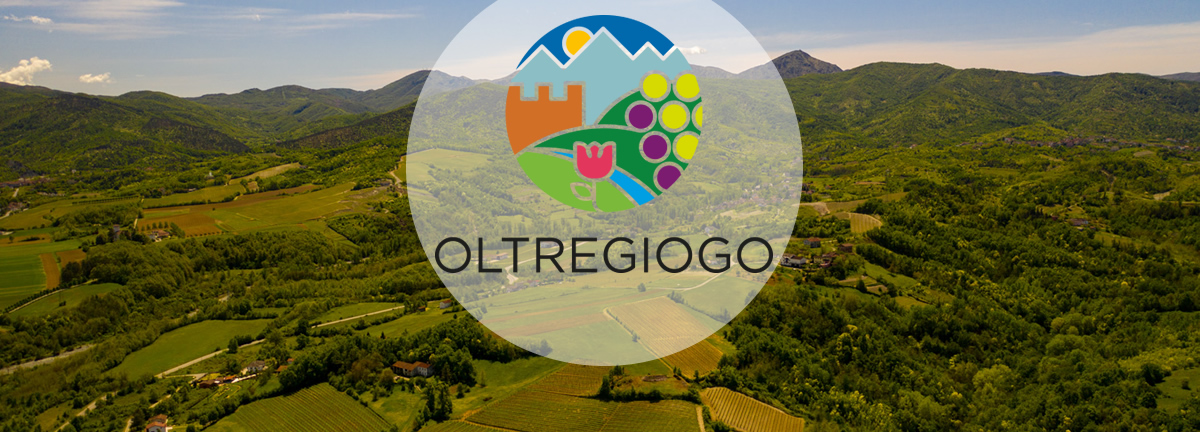There are traces of foundation poles of wooden structures, which emerged during the work on the sports field, which provide the most ancient archaeological evidence of the presence of an archaic face, where the urban settlement of Gavi would later rise in Roman times. Gavi derives from the name “Gavius” which was very common in Latin anthroponymy; other hypotheses refer to the word “gava” which, in some dialects of Northern Italy, means a deep torrential valley or to the Germanic word “gawi” understood as being village or district.
The first reference to Gavi is contained in the archival document of 972 as a primitive nucleus of an agricultural population. Then in 1006 some lands of the Gaviese area were in the possession of the bishop of Genoa and other rural funds were donated in 1033 by the Marquis Adalbert II, founder of the Adalbertini of Gavi, Parodi and Massa, to the Monastery of Santa Maria di Castiglione Parmense.
THE MEDIEVAL VILLAGE
On a visit to Gavi you cannot miss the medieval village, which is now partly urbanized.
The itinerary follows the ancient “Toll Road” near the Maddalena tavern which was located at the fork between Via Cavalieri di Vittorio Veneto and Strada del Lemme where there is still a rural building which preserves traces of the original seventeenth-century structures.
Then there is the Mill of the Magdalene, annoted in 1421 as the “Upper Mill near the church Of Sant’Eusebio”.
In fact, from fiftteenth century sources the Monastery of Sant’Eusebio rose between 1127 and 1462 as an annex of the Benedictine Abbey of Santa Maria di Castiglione Parmenese.
The convent was then abandoned and a furnace was built on the same site in 1454, which remained until 1914.
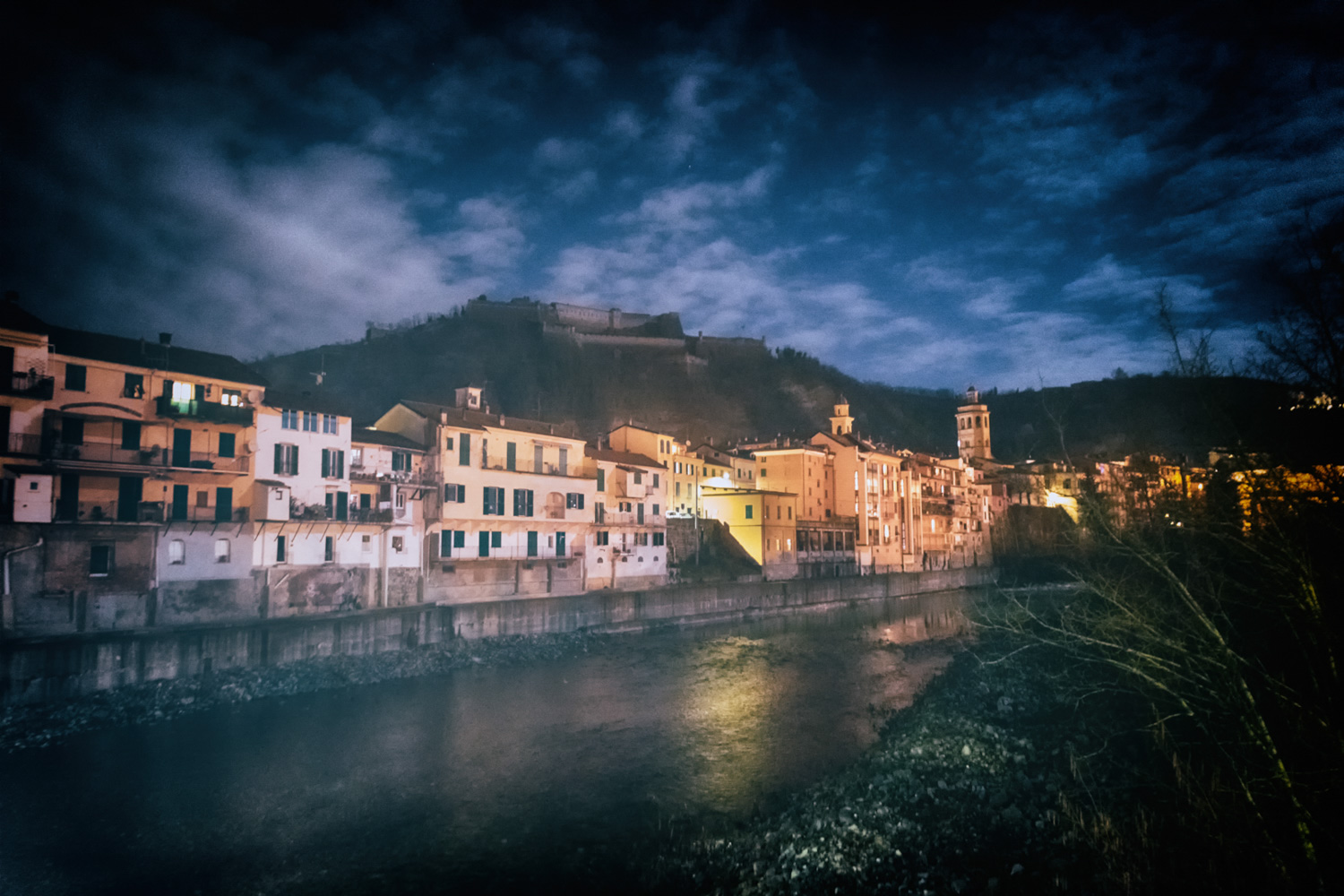
Via Garibaldi is the old district of the Carmine, where the convent of Santa Maria dell’Annunziata was built in the second half of the 16th century and to which the Carmelites moved after the abandonment of Monastery of Sant’Eusebio.
In 1582 there were six altars; in 1798 it was expropriated by the Republic of Genoa.
Among the works of art preserved in the monastery, an eighteenth-century wooden crucifix, some statues and the marble altar were recovered which, purchased by Monsignor Antonio Reggio, and were donated to the Oratorio dei Bianchi.
Monsignor Reggio had a small chapel, which still exists, built on the edge of the convent area, dedicated to Santa Maria del Carmine.
The organ of the convent church was purchased by the Compagnia del Rosario and donated to the Parish Church of San Giacomo.
Further on there is the old hospital built on the site of a previous building where, at the beginning of the thirteenth century, a group of “beaten” and “scourged” people who came from France were housed. The hospital was originally dedicated to San Cristoforo and was rebuilt in the 16th century with the provision that there should be a division of the room for men and women.
The central Via Mameli houses the most important noble palaces:
Palazzo Giovanni Battista Cambiaso 1798, with a private chapel;
Palazzo di Giovanni Battista Marenco with annexed the two Gavi public ovens;
The Palace built by Pompeo Rocca in 1705;
Palazzo di Città, historical seat of the Municipality of Gavi dating back to 1589;
Palazzo Da Passano described in 1798;
Palazzo Borlasca built in the fourteenth century which hosted the Emperor Charles V in 1529;
Palazzo Rocca Sartorio renovated in 1641;
Palazzo Raggio, an ancient salt cellar, Palazzo Serra, formerly Pinelli Gentile, from the 17th century.
IL PORTINO (THE SMALL DOOR)
The entrance to the city has a one-way rectangular plan.
The mullioned window on the façade, with small columns and a simple stylized Corinthian capital seem to refer to the work dating back to the early thirteenth century.
The “Portino” is the only surviving access door.
This entrance allowed access to the village, however it was used mainly in order to access the underlying Mill.
The workshop, referred to as “Mulino di Mezzo” belonged to the Marquises of Gavi and a barracks was built near the mill to house the soldiers of the garrison guarding the inmates.
L’ORATORIO DEI BIANCHI
The Oratory of the Bianchi, located between Via Garibaldi and Via Ospedale, whose name derives from the colour of the capes worn by the members of the brotherhood, was mentioned in 1582 among those listed by the apostolic visitor to Genoa.
The church, restored in 1975, has a single nave and was decorated with episodes from the stories of the passion by Giovanni Agostino Ridolfi at the end of the 16th century.
The mural paintings have almost disappeared following the two side altars and the valuable organ made by Carlo Serassi in 1827.
WORKS
Mural fresco of the Last Judgment painted on the vault in the mid-17th century by Giovanni Battista Carlone;
Processional crucifix attributed to Gerolamo Del Canto;
Baroque statues of the Immaculate Conception, San Rocco and Santa Limbania;
Altarpiece by Bernardo Montessoro from Serravalle from 1608.
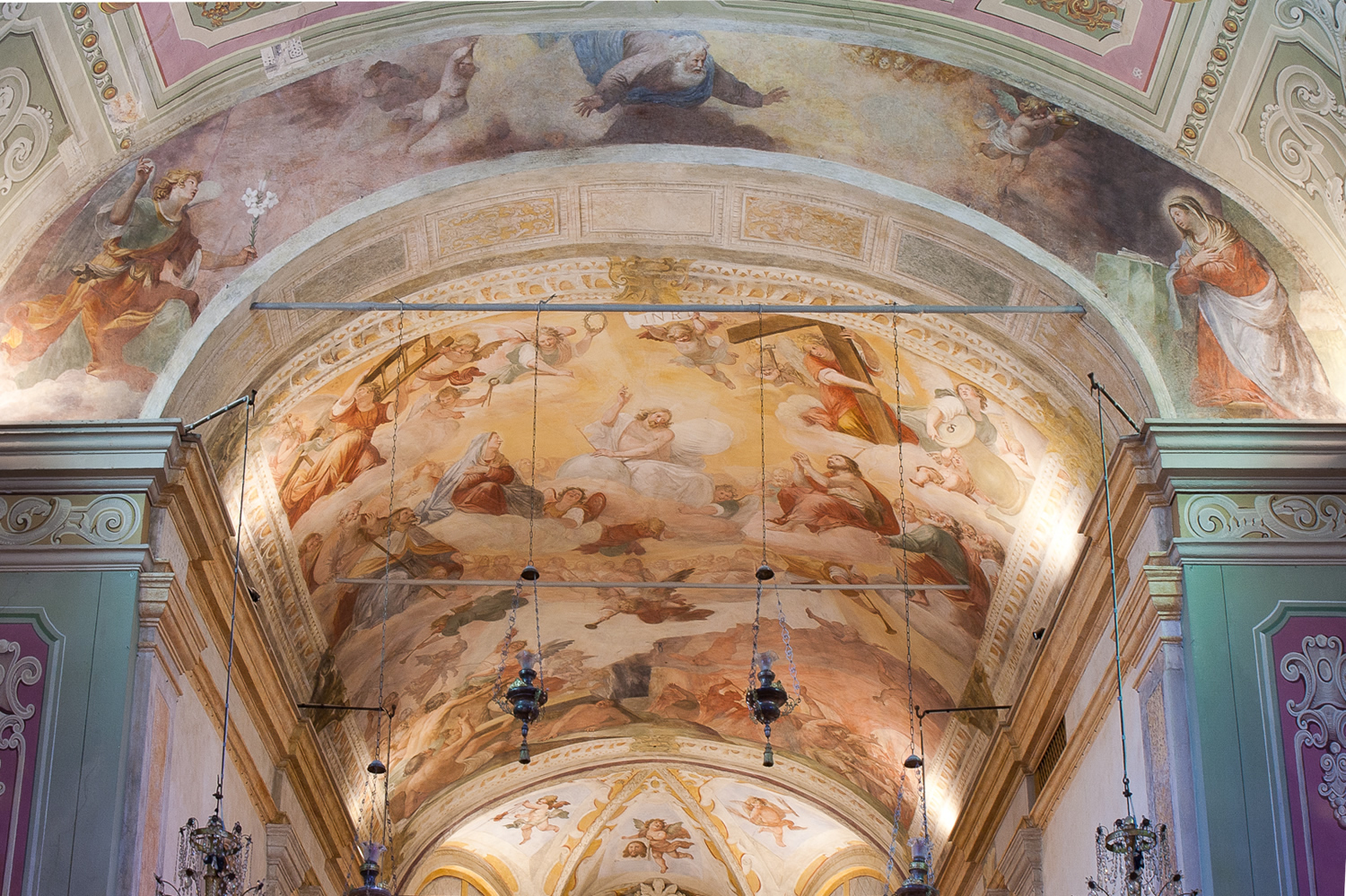
THE ORATORY OF THE TURCHINI
The Oratory of the Turchini, located adjacent to the Hospital, whose name derives from the colour of the capes worn by the members of the brotherhood, is officiated by the Confraternity of N.S. Assunta, originally the fraternity of “disciplinati” of Santa Maria, was listed in 1582 and managed the Monte di Pietà, as shown by the inscription on the outside, which granted loans to poor families without charging interest, a function that the Turchini carried out until the early decades of Twentieth century.
The church has a single nave with a barrel vault inside and preserves valuable works of art
WORKS OF ART
Wooden figurine of the Immaculate Madonna attributed to the Neapolitan school of the seventeenth century;
Banner with decorated silver thread embroidery depicting the Assumption of the Virgin Mary and, on the reverse side, St. John the Evangelist;
Cross in a silver case, retraceable to the early eighteenth century, of French manufacture;
Statue of Saint’Antonio the Abbot from the deconsecrated chapel of Paraiso;
Wooden statue of the Madonna Assunta by Bartolomeo Carrea;
In the niches of the choir a Baroque wooden statue and a marble statue of the “Madonna delle Grazie” from the second decade of the seventeenth century received from Spain;
Organ of the choir, work of 1824, made by Giovanni Battista Lingiardi.
L’ORATORIO DEI ROSSI
Along the road that leads to the Borgonovo district, stands the Oratorio dei Rossi, oratory of the Confraternity of the Holy Trinity, evident from the second half of the 16th century and aggregated to the Arch-confraternity of the Holy Trinity of Rome in 1609.
The name of “Rossi” derives from the colour of the capes worn by the members of the brotherhood.
The brotherhood managed the “Monte del Grano” and an oven built in 1670, with the obligation to sell bread and food at low prices.
The interior has a single barrel nave.
WORKS OF ART
Organ built in 1879 by the craftsman Camillo Guglielmo Bianchi;
Altarpiece depicting the Virgin with Child and Saints Agostino and Agata by Giuseppe Palmieri of Genoa (1674-1740);
Painting “Ecce Homo” by Luciano Borzone (1590-1645)
Picture of the “Martyrdom of San Sebastiano” from the first half of the 17th century;
Picture of the Holy Family with San Giovannino del Paggi;
Canvas with a profane subject containing “The Continence of Scipio” by Raffaele Badaracco (1648-1726);
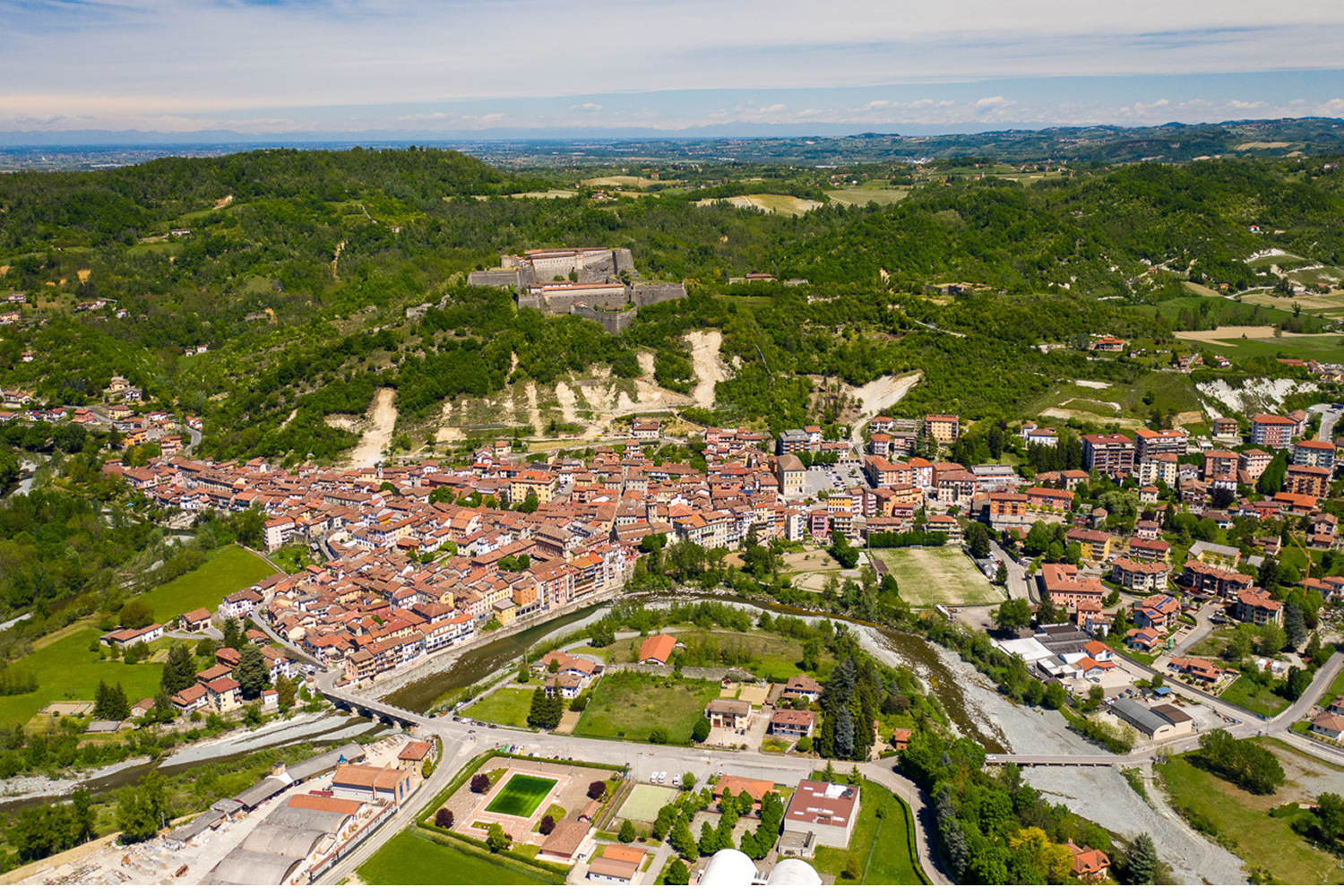
THE JEWISH GHETTO
The small Jewish ghetto of Gavi was located in Piazza delle Mura, referred to as “Contrada delle Cricche”
THE OLD LEMME BRIDGE
Until the 19th century there was the Parodi Gate.
Information relating to the bridge, probably in wood, dates back to 1228.
At the center of the bridge was a small shrine, still depicted in a painting from 1845.
Today there is a small chapel on the edge of the bridge, decorated with an elegant mural of the Madonna della Guardia painted around 1870 by Santo Bertelli (1840-1892), an artist from an ancient Gaviese family.
THE CHURCH OF SAN GIACOMO MAGGIORE
The building that represents the most famous monument of the Oltregiogo was built during the Lordship of the Marquises of Gavi in 1172.
The temple, significantly dedicated to San Giacomo Maggiore, preserves the memory of a previous hospice for pilgrims on the Via di Campostella.
The building is often assigned to the Lombard faces of the Romanesque, although there is no lack of authoritative readings that reveal a completely Genoese architectural structure.
THE EXTERNAL ASPECTS
Access lintel decorated with high relief representing the Coena Domini with the Christ in the center overlooking the twelve apostles arranged symmetrically six on each side and the inverted figure under the feet of Christ should be read as a representation of Coelus, dominated by the universe.
The tower has an octagonal structure of medieval construction.
The clock is inscribed in a typical Romanesque style.
The main bell was put in place in 1352 and bore the imprint of the heraldic symbol of the Visconti, then lords of Gavi.
WORKS OF ART
Small late Gothic wall painting depicting Saints Sebastian and Rocco;
Polyptych of San Giacomo crafted by Manfredo Boxilio in 1478 which overlooked the main altar which was sold in 1862 to the Linguistic Academy of Genoa where it is still preserved today;
Painting of the Dream of St. Joseph by Paggi (1554-1627);
Painting The Resurrection of Lazarus by the painter from Seravalle Bernardo Montessoro 17th century;
Altarpiece with Madonna and Child by Gandolfino da Roreto from 1493, Bronze statue of St. Joseph;
Painting depicting The Trinity and Saints Girolamo and Francesco da Paolo by Giovanni Battista Carlone;
Canvas of San Giacomo chasing the Moors by Raffaele Badaracco (1648-1726);
Canvas of the Baptism of Christ by Lazzaro Calvi dated 1591;
Marble statue of the Virgin and Child by the Tuscan sculptor Carlo Cacciatori from 1730;
Wooden statue Madonna del Rosario by Luigi Montecucco in 1854.
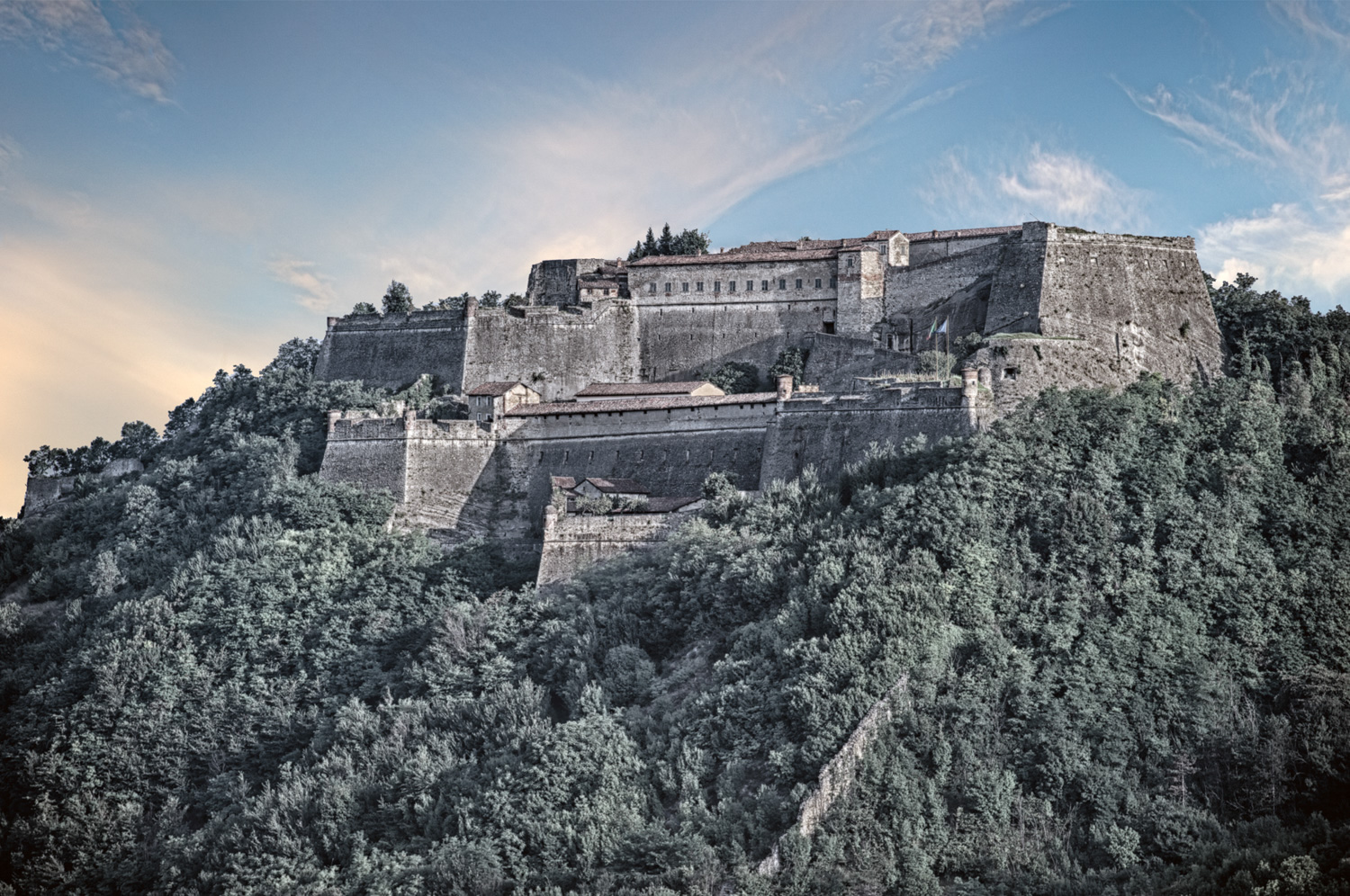
THE FORT
The fortification retains the traces of an ancient Byzantine construction, the central core of the arce incorporates notes of the ancient castle of the Marquises of Gavi: the access ramps, the two quadrangular towers, the wall that rises to the Bastione dello Stendardo.
In 1280 the Church of Santa Maria was noted in the castle which later, with the transformations of 1628, was moved to the lower courtyard and dedicated to Santa Barbara.
There are two wells, there was a forge-foundry for armaments and a hand mill for “muzzle ammunition”.
During the Lordship of the Marquises of Gavi, one of the towers of the Castle was owned by Emperor Frederick I, who also owned a house in the village.
Occupied by the Genoese in the early 12th century, and later by the Milanese, Facino Cane, Fregoso and Guasco, the castle returned to the Republic of Genoa in 1575.
In 1625 it resisted the attacks of the Franco-Savoyard militias and the same happened during the siege undertaken by the Austrians in 1747.
In 1799, after the defeat of Novi, it remained the only fortification occupied by the French in Italy.
Later, having exhausted its military function, it was used as a penal establishment from 1848, a district prison from 1891 to 1907 and a prisoner of war camp in the First and Second World Wars.
In the corridor of the tower next to the Roman gate, there remain visible traces of the Lombard domination and the Lordship of the Republic: the Visconti snake next to the Genoese cross.
The orderly design of the architectural furnishings, the symmetry of the openings for light, the round walkways, the drawbridges and the related supporting towers crowned with decorative pinnacles, give the fort an art content worthy of a peaceful residential castle.
THE CONVENT OF NS.S DELLE GRAZIE
Initially there was a building aedicule adorned with the effigy of the Madonna and Child, where San Bernardino preached between 1429 and 1431.
In 1435, a chapel dedicated to the Virgin was built on the shrine, to which was added a statue of the Saint erected by Spinetta Fregoso, Lord of Gavi at the time.
In 1466 a larger church was built dedicated to San Bernardino.
Around 1590 the Monastery of N.S.. delle Grazie was built under the direction of Gavino Ponte on behalf of the Republic of Genoa.
The institution passed, after a short time, to the Carmelites and was assigned to the Minor Observant Friars in 1599.
The convent church has three naves with barrel vaults.
The main altar is surrounded by six shrines, located on the perimeter walls of the side aisles dedicated to St. Francis, the Madonna delle Grazie, San Pasquale Baylon, San Bovo, Sant’Antonio da Padova and the Immaculate Conception.
All the altars were put in place in 1754-1755 to replace the previous ones.
On the feast of the Saint Bernardino, a cattle fair used to be held in the churchyard.
WORKS OF ART
Marble statue preserved in the Convent, which offers a realistic interpretation of San Bernardino dated 1455;
Organ installed in 1900 by the craftsman Camilo Guglielmo Bianchi;
At the end of the cloister gallery, there is walled painting dated around the end of the nineteenth century which depicts the Franciscan Tree of Holiness;
THE SANCTUARY OF NOSTRA SIGNORA DELLA GUARDIA
On the height of Forneto a shrine was built in 1760 in which the statue of the Madonna and Child was placed, which today dominates the main altar of the Sanctuary.
In 1800 the chapel was destroyed during the war and the statue was brought to Gavi to the Carmelite convent and finally to the Oratory of the Holy Trinity.
The works for the construction of the Sanctuary began in 1847 and concluded, with the help of the population, in 1861.
In 1941 the Shrine was entrusted to the Fathers of the Congregation of the Children of Mary, who set up the first middle schools in Gavi.
The interior of the sanctuary has a red Levanto marble floor and is structured in a Greek cross on massive pillars.
The main altar is surmounted by the niche with the eighteenth-century statue of the Virgin;
The two side altars are dedicated to the Sacred Heart and to the Marriage of Mary.
The concert of four bells was put in place in 1880.
Gallery
